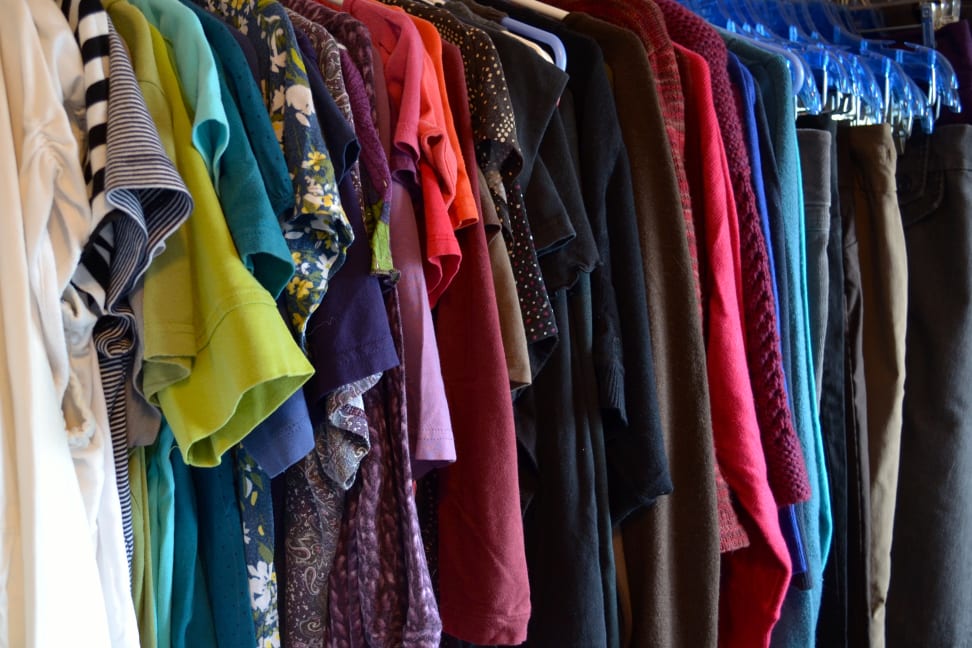How to Sell Used Clothes in the 21st Century
Here's how consignment works in the internet age.
 Credit:
Flickr user "thebees"
Credit:
Flickr user "thebees"
Products are chosen independently by our editors. Purchases made through our links may earn us a commission.
With the change in seasons, now is the time to go through your closet and get rid of clothes you just don't wear anymore. But before you throw out your old duds, you might want to consider selling them. If your unwanted clothes are from a good brand and still in good condition, you stand to make a pretty penny.
Old-school consignment shops are still a great way to make money off of clothes, but they're no longer the only way. Thanks to the proliferation of apps and other online services, it's easier than ever to sell your stuff without ever setting foot outside your home.

1. Sort and Clean Your Clothes
Before you offer your clothes for sale, it's important to inspect and clean them. And remember: Most consignment shops and services aren't going to take cheap clothes from low-end retailers, so set those garments aside.
Next, you'll want to check for any signs of wear and stains. If something has a hole in it—one that wasn't there by design, anyway—just throw it out. If there's a stain, try to wash it out.
It's actually a good idea to wash everything you plan to sell. No one wants to buy a musty-smelling shirt or pair of jeans.

2. Choose a Reseller
There are two ways to sell your stuff: at a physical consignment shop, or online. Both have advantages and disadvantages, and these can vary even further depending on the online service you choose. For example, some services require you to mail in all your clothes, while others will accept photos and let you ship items to buyers yourself.
If shipping is a hassle for you, then it might be easier to take all of your clothes to a local consignment shop. But be warned that many of them take a much higher commission than the online resellers.
Consignment Shops
If you've decided to sell your clothes the old fashion way, then there are a number of shops to choose from. You can either go to a local consignment store or a national chain like Buffalo Exchange or Crossroads Trading Company. (There's also Clothes Mentor, but it only buys and sells women's clothing.)
{{amazon name="Gain Liquid Detergent with Original Scent, 32 Loads, 50-Ounce", asin="B001PIAPDI", align="right"}} These stores will examine your clothes and figure out what they can and can't sell. If they can sell it, they'll offer you a small percentage of the sale price—usually much, much less than the original retail price.
For example, Crossroads offers 35 percent of the sale price in cash, or 50 percent in store credit. Clothes Mentor is similar, offering one-third of the sales price in cash. According to Racked, Buffalo Exchange is the stingiest of the major chains, offering 30 percent of the sale price in cash or 50 percent in store credit.
As for what they'll buy, Crossroads and Clothes Mentor provide lists of the brands and types of clothing they accept. Buffalo Exchange has "wanted" ads listing the ever-changing needs of particular stores.
It's also worth noting that Buffalo Exchange and Crossroads also offer sell-by-mail services; you just mail your clothing to them, and they take care of the rest. The only catch is that they'll charge you a fee to return the clothes they don't want. (Or you can opt to donate them for free.)
Online Services
Unlike physical shops, consignment apps and services handle more of the process for you. There are many companies to choose from and they all fall into three distinct categories: gender-specific, all-purpose, and high-end.
{{amazon name="Sauder HomePlus Wardrobe, Dakota Oak", asin="B005EFYS36", align="right"}} Gender-specific services, unsurprisingly, focus on clothing for either men or women. Poshmark, Tradesy, and Threadflip will only sell women's clothing, while Grailed is the only company that strictly sells men's clothing. (Sorry, guys.)
All-purpose services will sell just about anything, but only two services fall under this category—eBay Valet and ThredUp. Finally, for high-end clothing, you can try TheRealReal, SnobSwap, and Vaunte.
Most of these services work in one of two ways. The first method has you send your clothes to company HQ, where it's inspected and either put up for sale or rejected. Rejected items are usually donated or recycled, or you have the option of having the clothing sent back to you—most of the time for a fee.
The other method asks you to photograph each item and list it on the service yourself. The company will then approve or reject each listing. If it sells, the company usually covers shipping and asks you to ship the item to the buyer.
The best part about online consignment is that many of these services give users a much larger chunk of the profits. For example, Threadflip offers up to 80 percent of the sale price.

3. Sell It Yourself
If neither brick-and-mortar or online consignment interest you, there's always the do-it-yourself option. The upside is that you keep all of the profits. The downside? You also do all of the work, and that includes paying for shipping.
You can always list your clothes on eBay or Craigslist, but Business Insider notes that there's a third option: Instagram. Believe it or not, you can find items for sale on Instagram under the hashtag #shopmycloset.
Sellers post photos of the items for sale along with a price, and ask interested buyers to call, direct message, or even leave their email address in a comment. Sellers then handle the transaction process via PayPal and ship the item to its new owner.
Related Video
{{brightcove '4356108314001'}}


